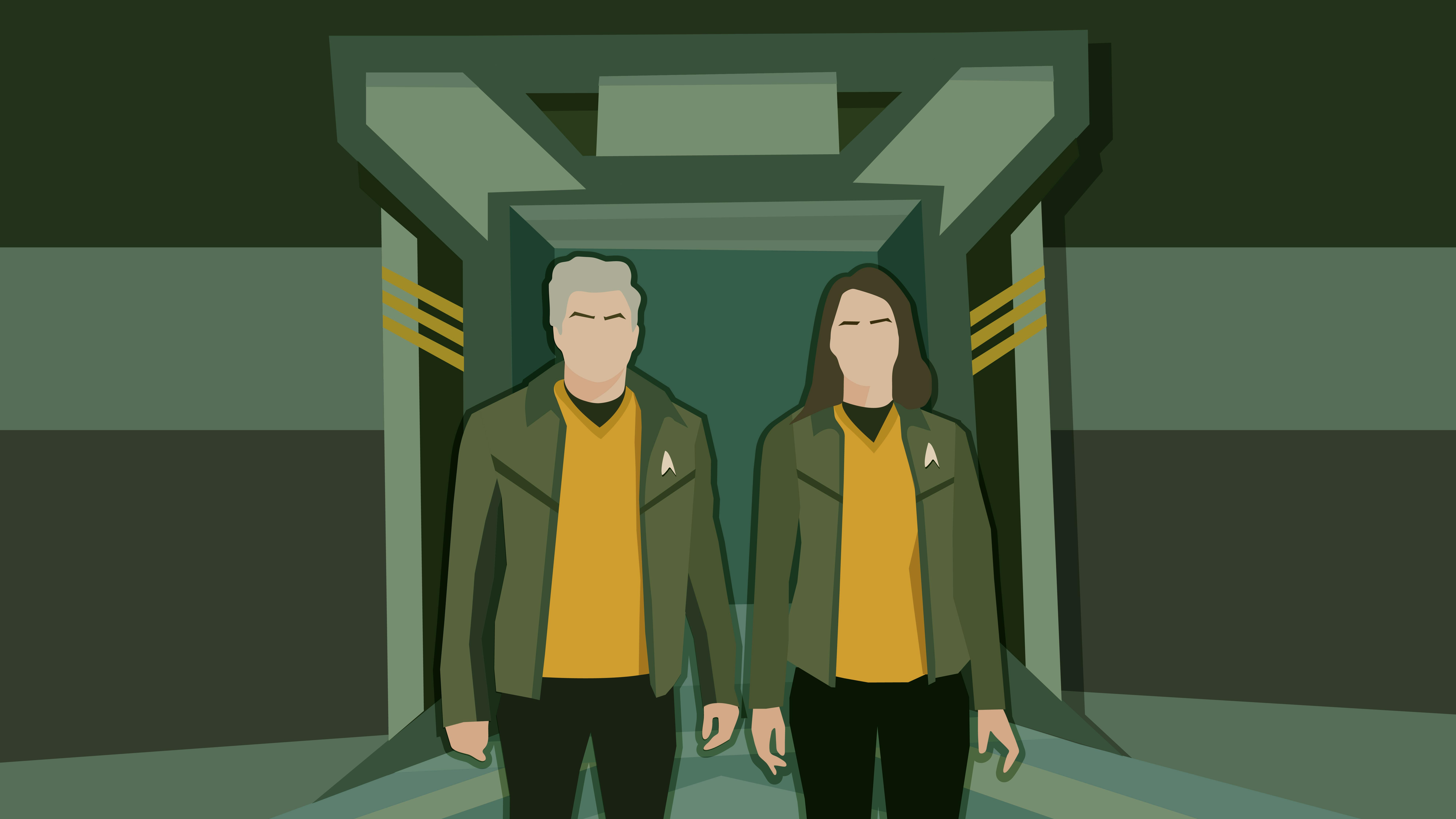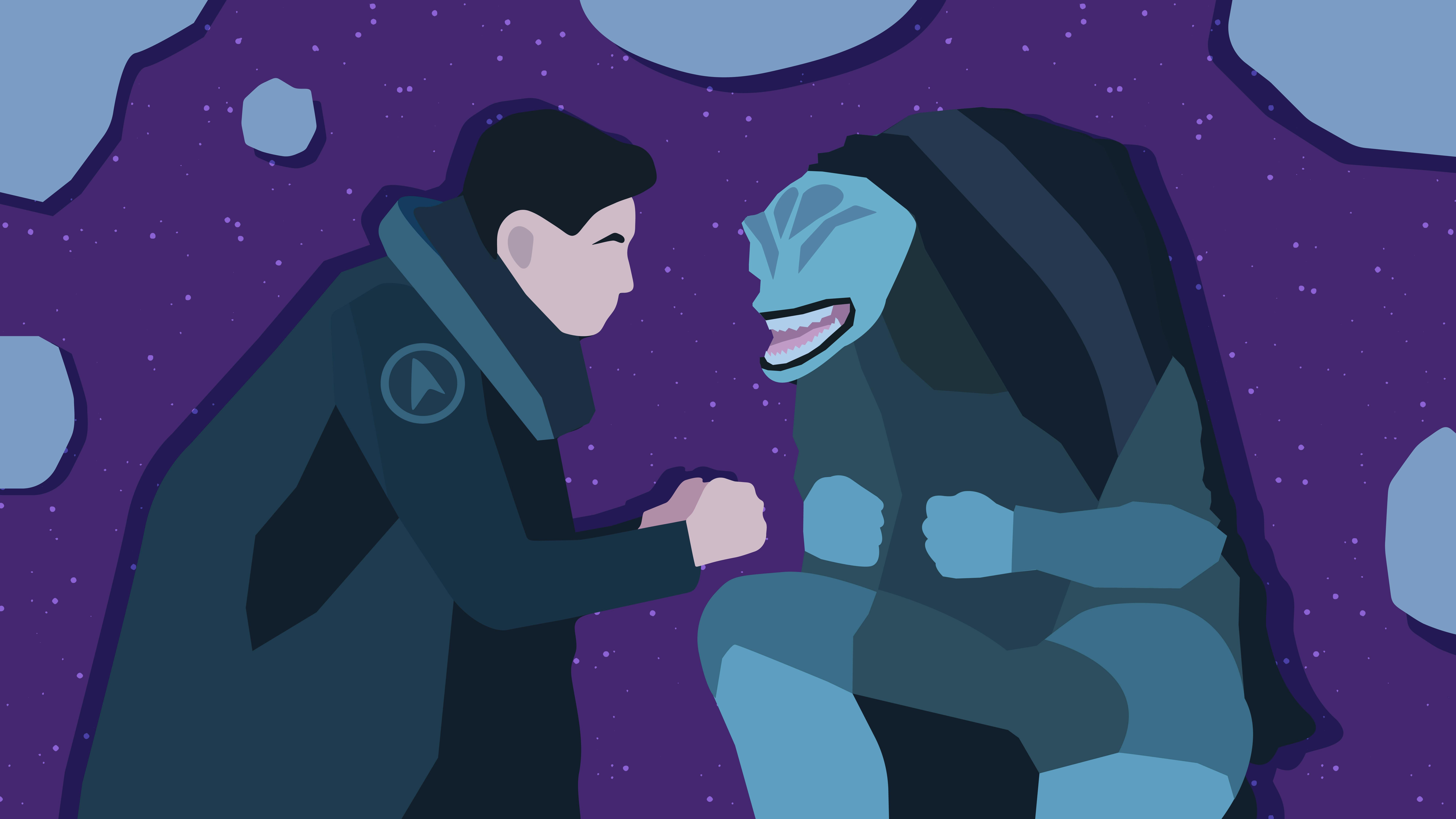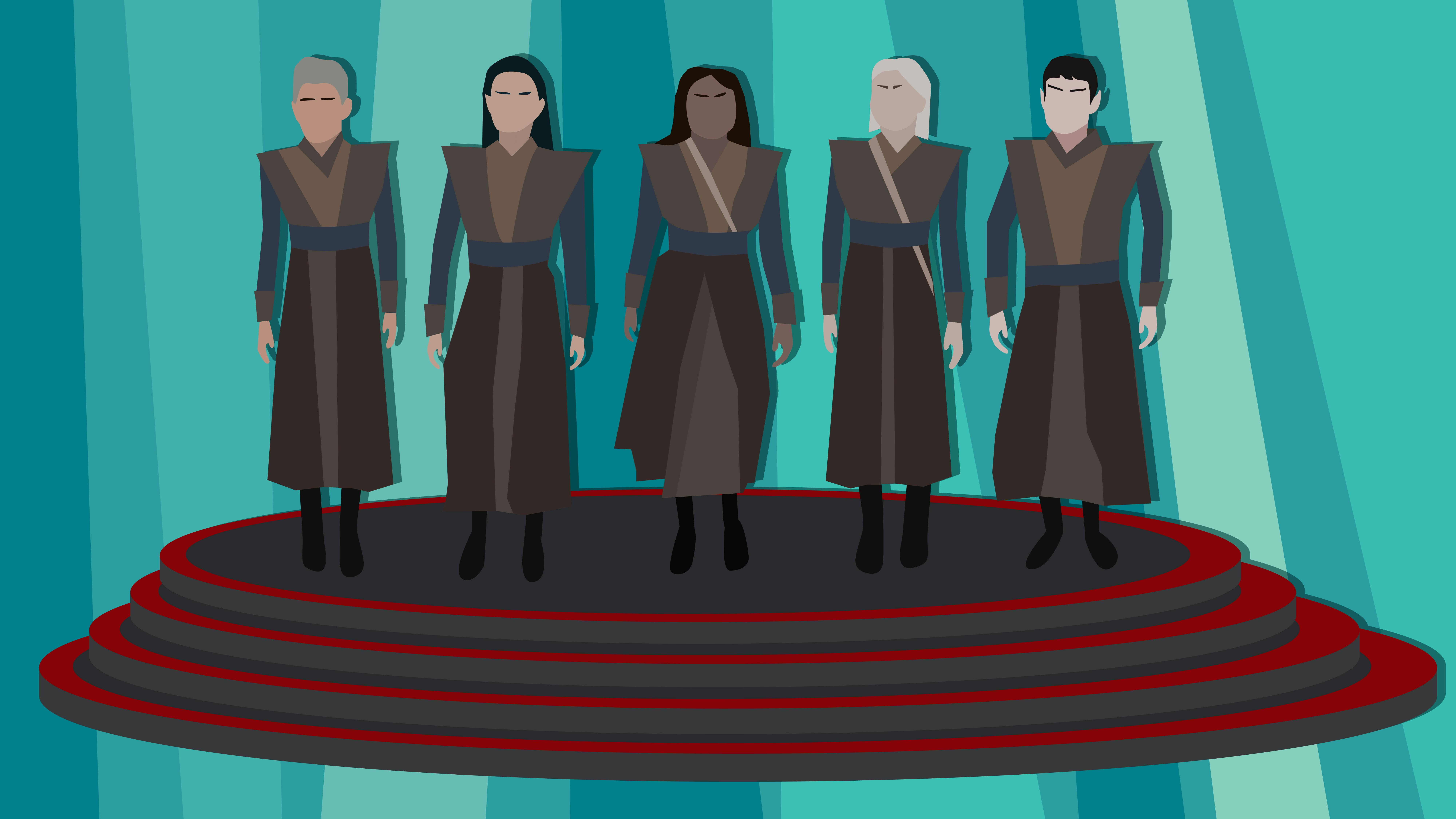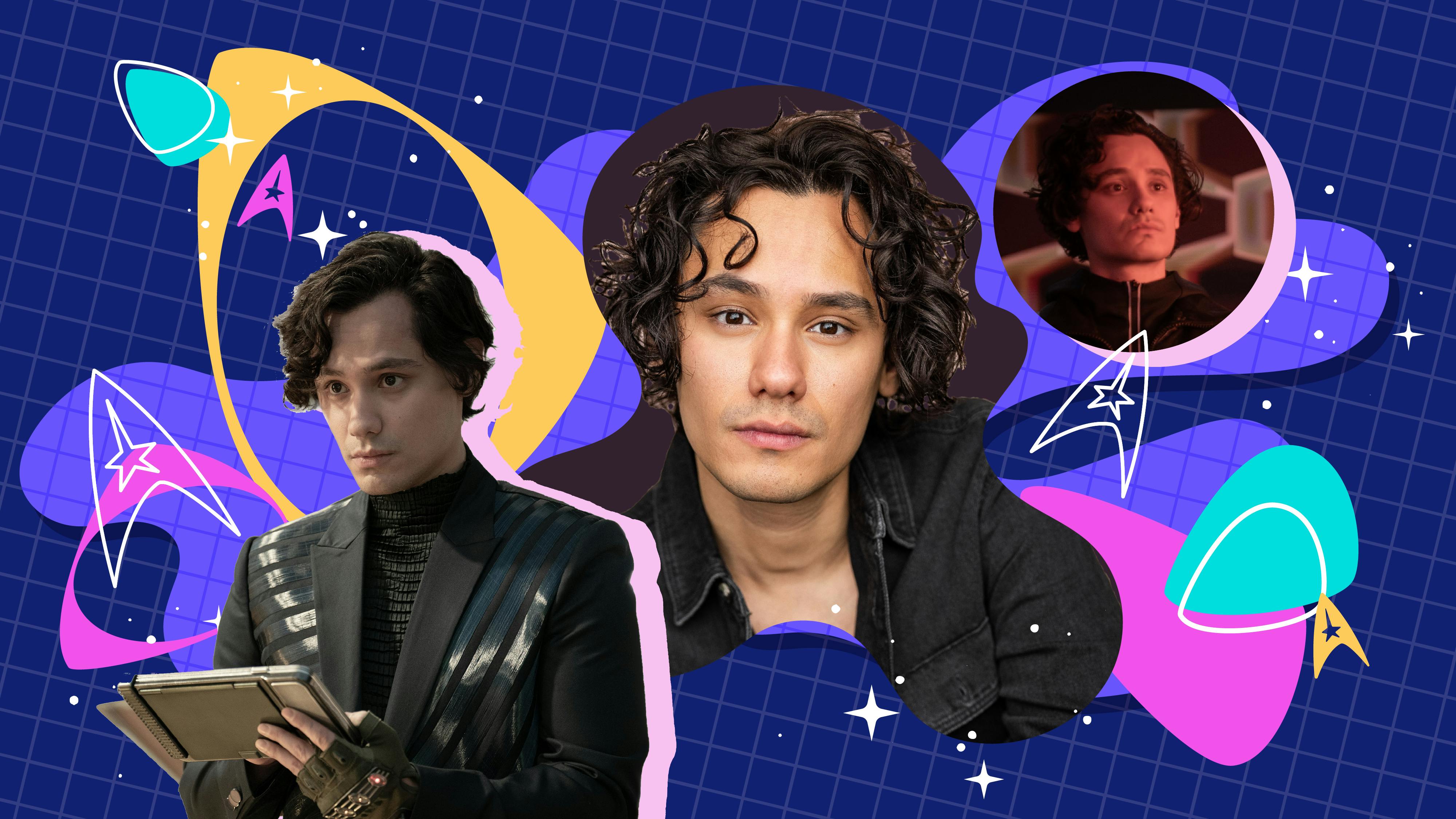Published Jan 8, 2018
SPOILERS - Frakes on Directing Discovery
SPOILERS - Frakes on Directing Discovery
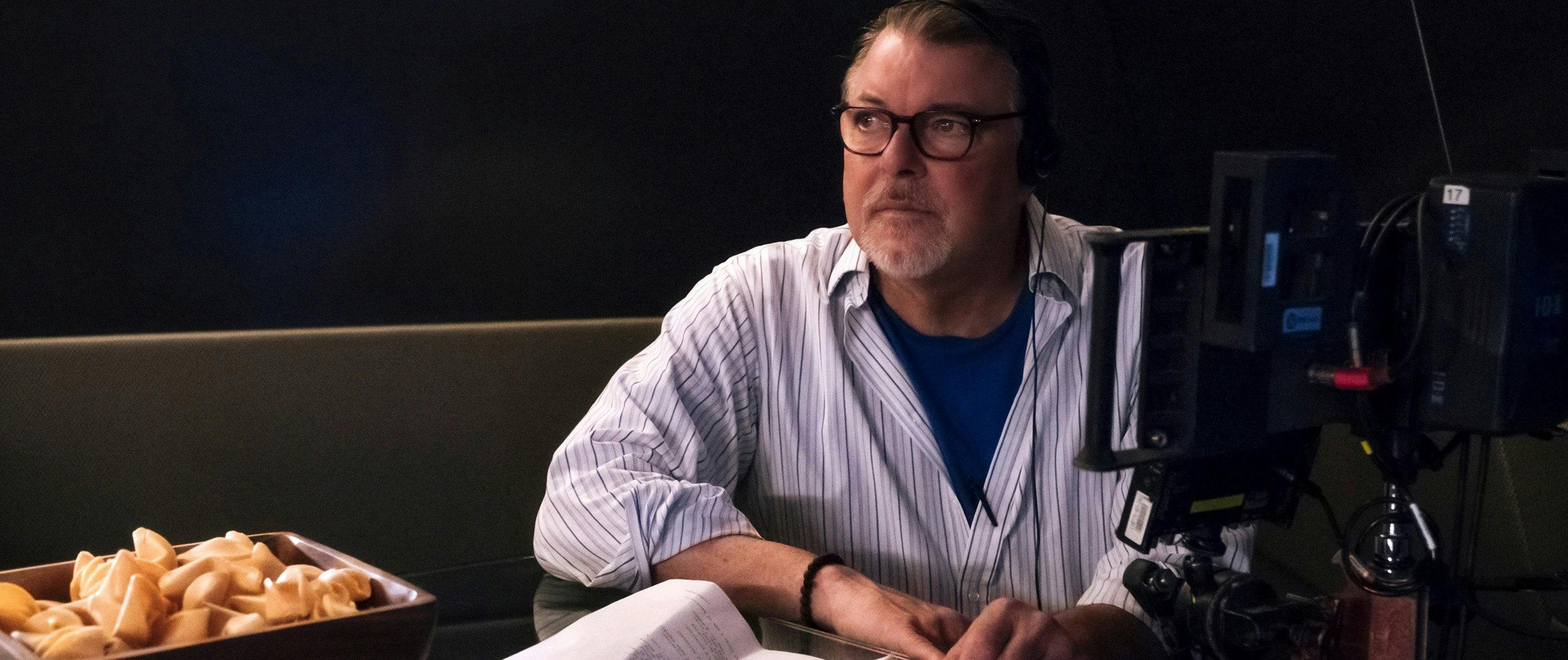
“Despite Yourself” had it all: love, death, honor, the Mirror Universe, a Defiant mention -- and more. And bringing episode #10 of Star Trek: Discovery to the screen was none other than Jonathan Frakes. The longtime TNG star and now veteran director previewed “Despite Yourself” for StarTrek.com readers the other day, and now he’s back with us to discuss the episode in the past tense. NOTE: Massive spoilers ahead if you haven’t seen the episode yet…
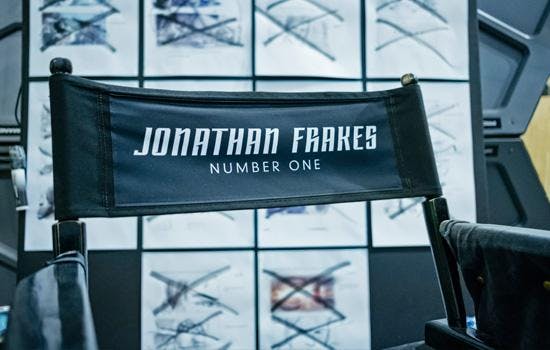
What worked best for you about the episode?
The story was strong. Questions were answered. Characters found their legs under them. I think the show in general has gotten itself on track. I remember so clearly how this happened with us (the TNG cast). It took us two or three seasons, and this company seems to have found itself two-thirds of the way through the first season. That's really what it takes. As we know, with all things Star Trek, it's about the relationships, it's about the family. The Stamets-Culber relationship was incredibly strong. Tilly and Burnham have a fabulous relationship. Lorca's relationship in general with his whole crew… The strings are tied up nicely. It felt like it was half of a two-parter.
Tyler has a signature chair move, which involves him kicking the seat out for someone, usually Burnham, whom he wants to have sit next to him. You had a signature chair move of your own. Did that come up as you shot that scene with Shazad and Sonequa, or no?
Yes, of course. I said, "Show me your moves. Show me your chair moves. I had my own.” I hadn't seen that bit from the earlier episode where Shazad did that. You just breeze past it. So, it'll probably become part of the canon, like everything else. It's proper fun. He's a wonderful actor, Shazad.
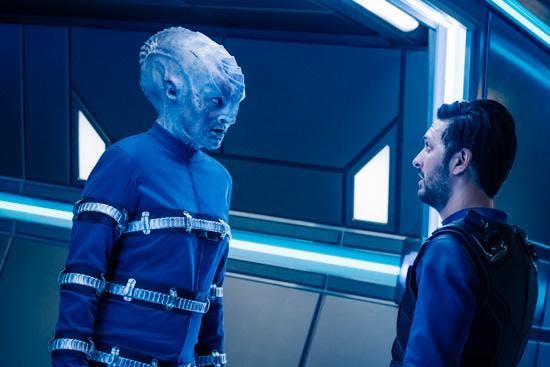
The work that he did with Mary Chieffo in the brig, I think, is possibly the most-powerful scene in the episode. And what about the ending? What about Mr. Isaacs going full throttle in the tube.
How many takes did it take to get all the screaming done?
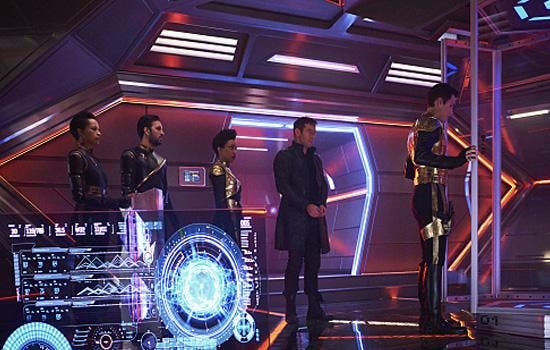
Jason’s a pro. Two or three takes is all you need. If he hasn't got his stuff in two or three takes, you've missed something. He comes to work ready. He's like Patrick (Stewart). He's fully prepared and it has to make sense.
What was your sense of how much fun the cast had playing variations on their characters? Especially Mary Wiseman turning into Captain Killy and Isaacs doing that Scotty-ish accent for a moment?
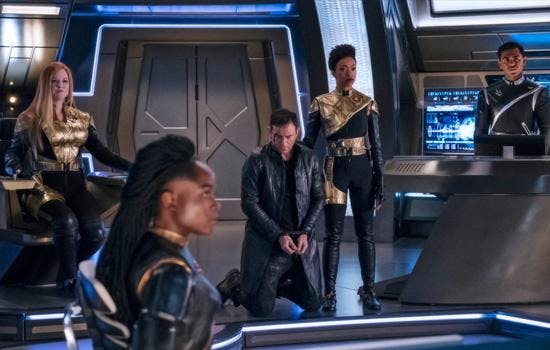
Oh, that was brilliant. That, for my money, is the loveliest Easter egg so far from Discovery. He also, if you notice, doctored up the speech so that if you listened in closely he said, “To boldly go” somewhere in there. That was just prior to him doing the impersonation. We had a ball. We had a ball. Mary, the two Marys from Juilliard, they can do anything, and they have quite a committed friendship off camera.
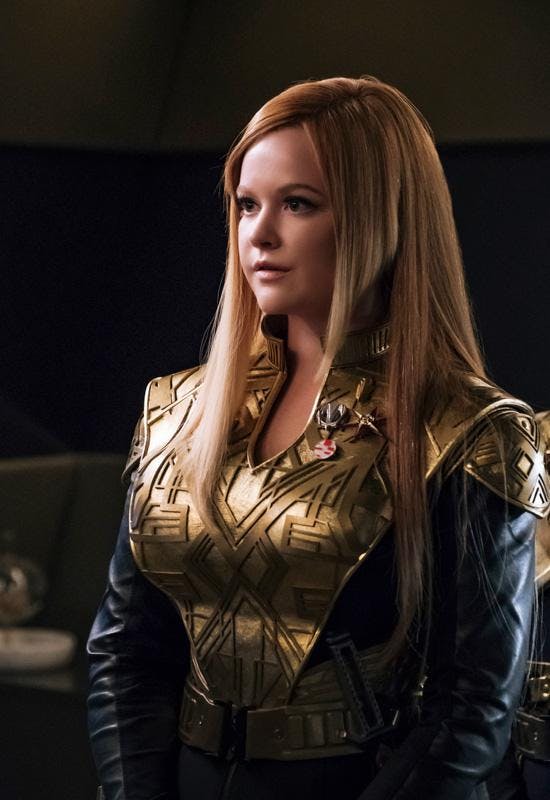
But to have Mary Wiseman as Captain Killy was quite different for her. I think she enjoyed that. Again, I can’t emphasize this enough, how much this company feels like our (TNG) company in terms of their friendships. You can tell when an acting crew stays at their cast chairs during a lighting set-up, or when another actor’s scene is done, instead of immediately retreating to their trailer. It says volumes. They want to be in each other's company. They don't want to miss anything. They want to support each other. They trust each other and they genuinely like each other. It makes everybody's day better.
Take us through prepping/shooting the U.S.S Discovery / I.S.S. Discovery montage / transformation sequence…
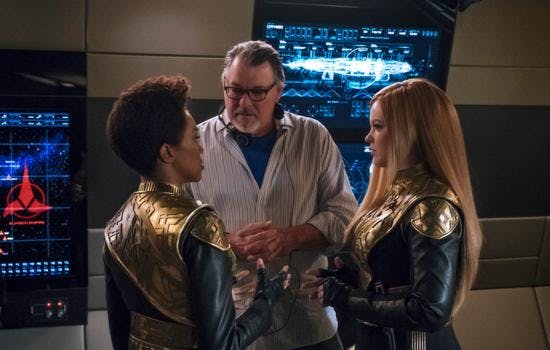
We had storyboarded that entire sequence and Sean Cochran, who wrote the script, and whoever helped him, we got very specific with the pieces we wanted to get. We were, at the end of the day, piggy-backing those. We set one shot up with one camera. We went to another part of the bridge or the corridor, wherever we were, and were ready for that set-up. Because there was no dialogue, and it was over voice-over, you could really do anything with it, and we had a concept of moving from left to right through the entire thing so that, where ever the editor wanted to put the pieces, you’d feel as if you're watching a timeline. So, it was, again, about preparation.
What can you tell us about shooting Culber’s death, and working with Wilson Cruz and Anthony Rapp on it?
It was an opportunity to explore an important relationship with two wonderful actors. We did, as I am wont to do, a lot of singing, mostly musical comedies. It counteracted the seriousness of the material, which I find often helps. I'm not much of a believer in, "We need to all feel the pain all day." The concept of Stamets being in the room and yet unable to see it, but clearly feeling it, that was heavy. We really wanted the moment to mean something, and I think it does. But could the whole thing be a quantum anomaly? Let’s say that maybe we haven’t seen the last of Culber.
Guide us through staging the close-quarters fight between Connor and Burnham. It was interesting because Sam Vartholomeos was on the show briefly at the start, and now he was back for a quick but pivotal moment…
Colin Hoult, the director of photography, said, "Wouldn't it be cool if… we were able to use the turbo lift essentially as a tool in the fight?" Then, in kicking that idea around with the production designer, and with Colin and with the stunt coordinator, we came across the concept that there’d be something inside that panel that essentially dropped the turbo lift. Burnham was smart enough to know how it worked. So, we did some wire work inside of it, where they were thrown to the roof. It was, again, all storyboarded. It was budgeted. I said, "This is a big deal." They said, "You know what? This is an enormously important story because, from this, she delivers the dead man to the bridge.” And that was a great ending for that part of the story.
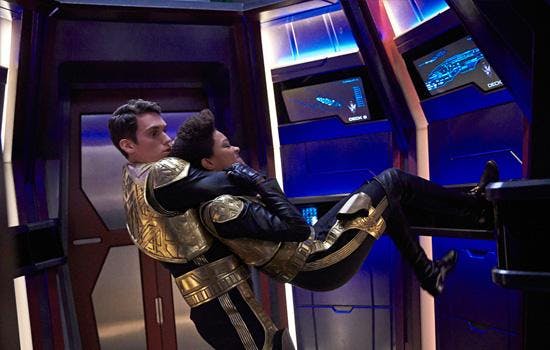
So, during prep, which we were lucky enough to have 10 days of, the stunt coordinator and the doubles for Sonequa and Sam rehearsed and rehearsed inside the space, which had already been built, except the wires and the pinpoints. They videotaped it and brought it to me to approve or disapprove. The production designer was involved in choosing what part of the turbo lift would break away, where the panel would be. So, that scene was one of those great examples of how it takes a team to do a TV show. I thought it was quite successful, that whole scene.
We’re assuming you had to smile at the inclusion of the Defiant?
Of course. It was not lost on me.
And let’s discuss the Burnham-Tyler scene at the very end…
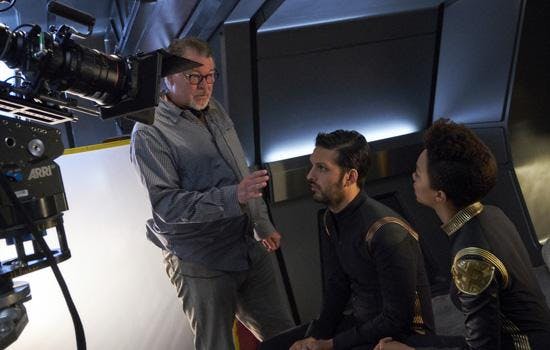
Love scenes can add a new level to a show. I've directed a number of them and I've been in a number of them as an actor, and I’ve found over the years that, at least in general, the best way to make an actor comfortable is to direct a love scene as if it is a dance or a sporting motion. You talk about the moves as opposed to talk about the sensuality, or “I want to see this much skin,” and all the things that we know are expected for a love scene to convey. The actors can take care of that. They don't need to be reminded of that.
So, my job, in my mind, is to design shots and stage them in a very… what is the word I'm looking for? In a choreographed way, so everybody can then wrap their heads around them. That way the actors can say to me, “So, you need me to go further back onto the bed,” or, “It's better if I hold the side of her head or her face with this hand because the camera will be there,” or, “Tell me when I'm in the light and I'll kiss...” So, getting into the specifics of what you need as a filmmaker and employing the actors to help you make the shots, it takes away some of the nervousness that people get about taking their clothes off, about being in bed with strangers, and it makes the entire event a lot more collaborative.
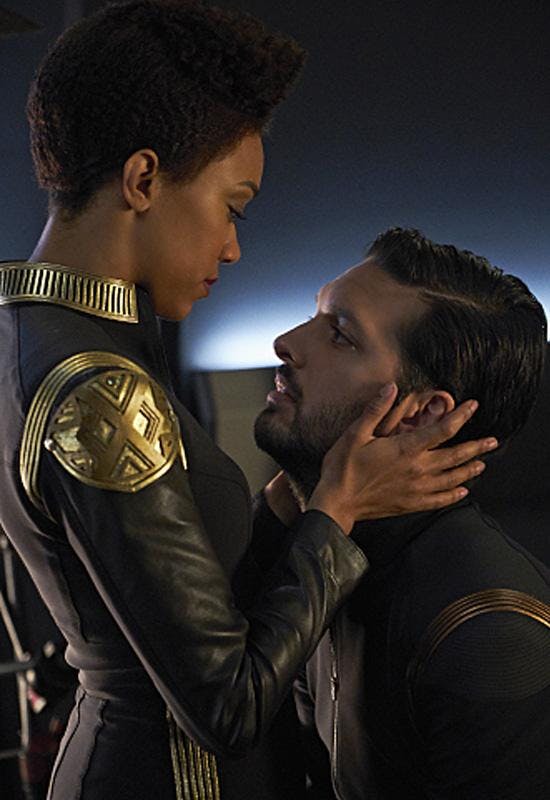
As Burnham undressed in that room, she was surprised that he was there. Gersha Phillips designed the costume so we actually could use it. A lot of costumes, especially in science fiction, are not functional. They need to look perfect. Burnham taking off her armor and her boots, it was so human and so active and so relatable that I think it helped the scene.
You told us you hope to be back next season. In the meantime, any parting thoughts on your first Discovery experience?
I just can't emphasize enough how emotional it was to be part of the next chapter of this incredible phenomenon that we're all blessed to be part of, and how honored I was to be quizzed by all the members of the company. I was very glad that I was the one from our show who was fortunate enough to be on the set for these guys who were already so versed in Star Trek and so deep into it that they wanted and still continued to want to carry on the mantle. I mean, it all sounds so corny as I'm saying it, but it's absolutely true.

